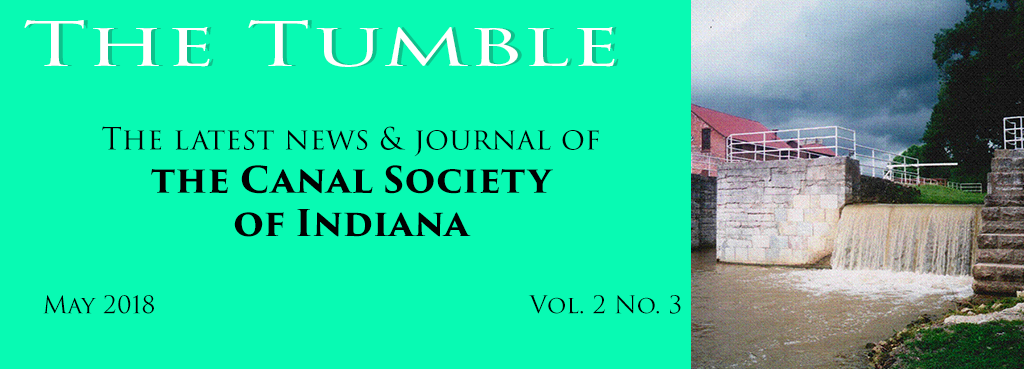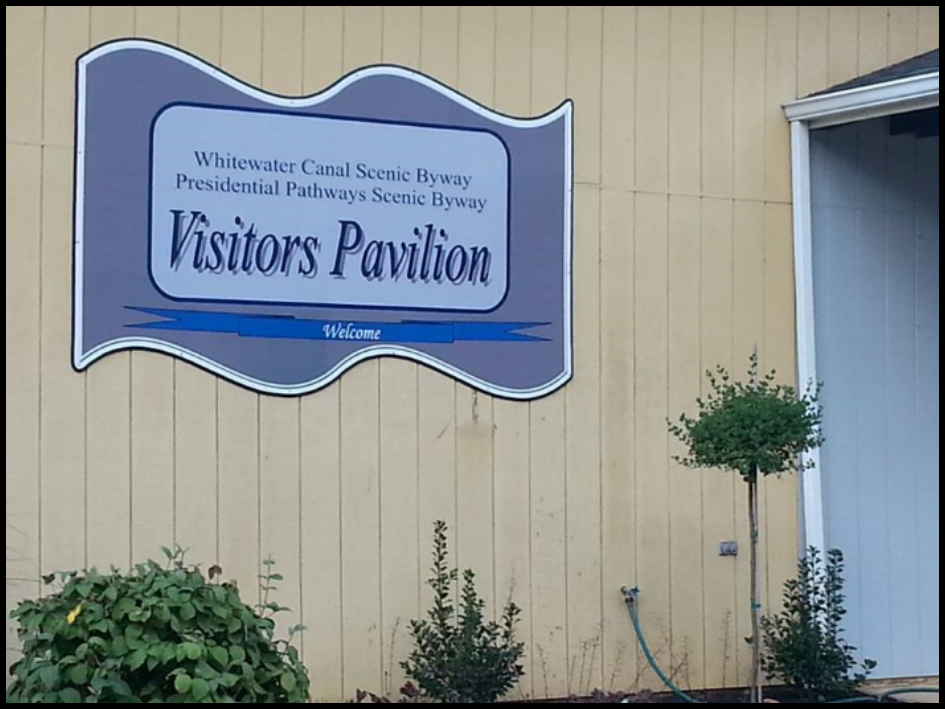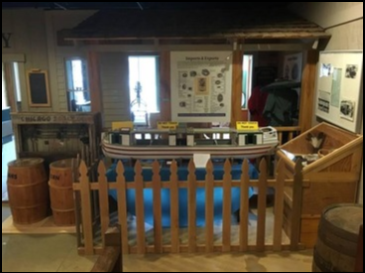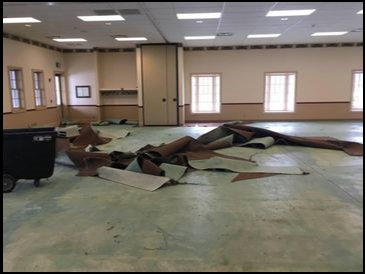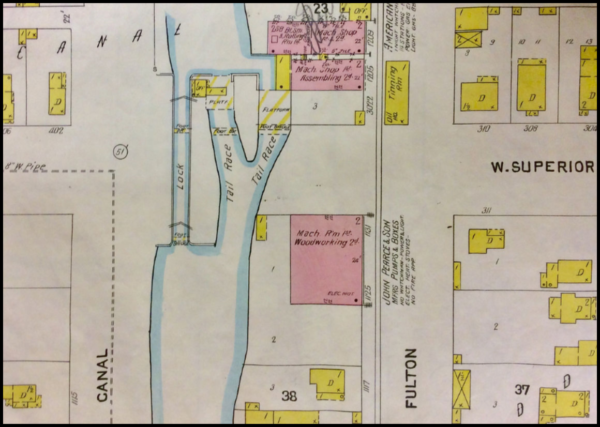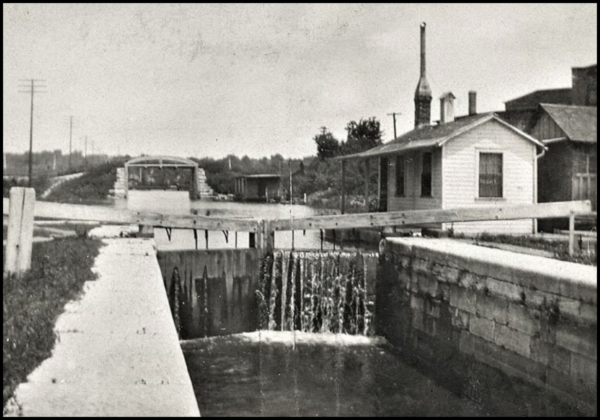Index:
William H. Stedman Find-A-Grave # 185194463
By Carolyn Schmidt
William H. Stedmam was born to Richard (1790-?) and Hannah (Ketchum) Stedman, natives of Ireland and New York respectively, in Orange County, New York on May 4, 1823. He was their second son. His siblings were Ezeriah K (1821-?) and Sarah S. (1832-?). In 1833, when William was age 10, the family moved to Muskingum County, Ohio. William remained there until he was thirty years old.
Around 1853 William emigrated to Tippecanoe County, Indiana. For the next ten years he worked in boating on the Wabash & Erie Canal.

The Canal Society of Indiana has copies of boat clearance records from Covington, Fountain County, Indiana from 1845-September 1864. Starting in late 1861 these records began carrying the name of the boat master (captain). We have three that show William H. Stedman as master.
Before then no captain was listed. They just gave the name of the boat, where it started and where it was bound, etc. William was hired as the captain of several boats at difference times. He did not own a boat. The boat “Telegram” traveled the farthest going from Covington all the way to the Indiana/Ohio State Line beyond New Haven, Indiana. Note his signature.

During the canal era most boats made short journeys between two or more towns delivering goods like those on the other two clearance records. There were very few boats that actually made the trip all the way from Toledo to Evansville or Evansville to Toledo on the Wabash & Erie Canal.
The canal was declining. William then worked on steamboats on the lower Wabash and Ohio rivers for a number of years.
In 1862 he married Julia M. Todd (Oct. 31,1840—Feb. 21, 1910). Julia was born in Toronto, Ontario, Canada. William was 38 years old and she was 21. They became the parents of five children all born in Indiana:
Hannah Stedman (July 8, 1863—March 26, 1907)
Mary J. Stedman (April 12, 1866—February 25, 1896)
James Thurston Calvin Stedman (May 17, 1868—1952)
John Reber Stedman (July 2, 1871—1941)
William Albert (Burt) Stedman (July 1, 1879—1930)
In 1867 William purchased a farm in Deer Creek Township, Miami County, Indiana and resided there making farming his sole business. He was regarded as a progressive farmer.
William was a Republican and believed in the principles upon which that party was based. He wanted the greatest good for his section and for the country as a whole.
 On January 12, 1909 William H. Stedman passed away at age 85. The cause of death was listed as heart disease. He was laid to rest in Section F Lot 123 Space 10 in Mt. Hope Cemetery at 411 North Grant Street in Peru, Miami County, Indiana on January 13, 1909. In his will he left all his real estate, all his personal property, rights & credits to his wife Julia to be used during her lifetime and divided equally between his heirs at the time of her death. She was appointed the executor of his will without any intervention by the courts.
On January 12, 1909 William H. Stedman passed away at age 85. The cause of death was listed as heart disease. He was laid to rest in Section F Lot 123 Space 10 in Mt. Hope Cemetery at 411 North Grant Street in Peru, Miami County, Indiana on January 13, 1909. In his will he left all his real estate, all his personal property, rights & credits to his wife Julia to be used during her lifetime and divided equally between his heirs at the time of her death. She was appointed the executor of his will without any intervention by the courts.
On February 21, 1910 William was followed in death by his wife, Julia, who was 69 years old. Julia was laid to rest by his side on February 24, 1910 in Section F Lot 123 Space 6 of Mt. Hope Cemetery in Peru, Indiana.
William and Julia’s daughters never married.
Their son James T. C. Stedman married Kathryn Anne Humrickhouse (1800–1941) on November 28, 1889. They had four children:
Ben A. (1890—1910)
Esther Nell (1891—19440
Julia Kathryn (1900—1988)
Charles Thurston (1903—1985).
Their son John R. Stedman married Della (?) in 1899.
Their son William A. Stedman married Jessie Margaret Dye on November 10, 1900. They had two children:
Effie (1901—1967)
Julia Mae (1904—1947)
Sources:
Ancestry.com
http://trees. Ancestry.com/tree/461565508/person/6486178298
Boat Clearance Record Book No. 1 November 1860-September 1864.
Fountain County, Indiana Recorder’s Office copied November 17, 1995
Recorder Mary Ann Martin, Toll Collector David Webb
Find-A-Grave
Memorial 185194463
History of Miami County, Indiana. Chicago, IL/Brant & Fuller, 1887.
Indiana Wills and Probate Records, 1798-1999.
United States Federal Census: 1850, 1880, 1900
Determining Tolls
By Bob Schmidt
A question that is sometimes asked is how were the weights of commodities determined on the canals? On the Erie Canal they used weighlocks that could weigh a boat for an unloaded tare weight and then later weigh it when loaded to determine the total weight of a shipment. On the Wabash & Erie there were no such structures. Ohio built a weighlock at Toledo, but it was used very little. There were a variety of scales along the Indiana canal routes.
Commodities were weighed on scales like this Fairbanks Morse Scale that was drawn by Terry Lacy from a scale owned by Norman Skinner. Skinner has also moved an old canal warehouse to his property near Perrysville, Indiana.
Terry Lacy also drew this canal warehouse and scale for Delphi’s Canal Park.
It was the responsibility of the boat Captain to prepare a detailed list of a shipment of goods in the form of a Clearance similar to a Bill of Lading to state the commodities being transported. This document was presented at the first collection point for visual verification by the Toll Collector.
There wasn’t much shipment of bulk non-food commodities such as coal on Indiana’s canals. There was no mechanization as today. Stevedores loaded and unloaded the canal boats. The quickest way to unload grain was in sacks or barrels. Most food commodities were shipped in sacks, crates or barrels. The weight of a barrel or a bushel was a known quantity or weight. Even the non-food items such as stone and lumber were not measured in pounds for toll. Stone was calculated in perches and lumber in board feet.

In July 1859 toll rates were established in Fort Wayne for various commodities in an agreement between Ohio and Indiana. An interesting example was that coffee and sugar tolls were based on weight but the former was in bags and the latter in barrels.
The persons making the shipment were responsible to obtain a weight or count of the containers as the boat was being loaded and the Captain certified this Clearance document with his signasture. Was there misinformation and cheating? Most probably yes, but misrepresentations didn’t financially doom the canals. The bottom line is that we had no system to verify shipping weights and relied on an honest Clearance and visual inspections.
Since there was no Easy-Pass like on toll roads today, each toll collector along the route was shown the Clearance document, cleared the boat and, when they reached the destination, the owner of the boat was billed for the amount shown on the document. Where were the toll collection points? – Fort Wayne, Lagro, Logansport, Lafayette, Covington, Terre Haute, Worthington, Petersburg, and Evansville.
Mules
By Sue Simerman, CSI Director, Ossian, Indiana

Imagine seeing a canal boat on the Wabash and Erie Canal or the Whitewater Canal that is hauling freight and being pulled in tandem by two mules or maybe three in a straight line. This boat has a stable for two mules. Of course hay and some feed are needed as well as someone who can handle at least four of these animals. During the canal era most owners or captains had two teams that would be alternated every six hours, six hours pulling then six hours confined in a small stable on the boat.
A 1900 black and white picture on the Erie Canal shows some men and a mule on a portable bridge. One mule is using block and tackle to pull the other mule into the canal boat. This vision shows the patience it would take to train these animals to trust their handlers and to teach them to quickly enter on their own. They are said to be quick learners but can be stubborn if frightened.

Mules are the offspring of a male donkey (jack) and a female horse (mare.) A hinny is the offspring of a female donkey and a male horse. A hinny looks more similar to a horse than to a mule. Mules usually can not breed, but it does happen on rare occasions.
The size of a mule depends on the breeding of the female parent. They can be light weight, mid weight or classed as a heavy weight when the donkey is bred with a draft horse. There are even miniature mules. The middle weight mules would probably be the adequate size for a canal packet boat. They would be smaller and need less space in their floating stable. Mules range in weight between 820 to 1000 pounds.
Mules are said to be more patient, longer lived and hardier than horses. They are less obstinate and more intelligent than donkeys. The skin or hide of a mule is harder, less sensitive and can better handle the effects from the sun or a bout of icy rain. Their hooves are harder also. They naturally resist insects and diseases.

Mules are mostly distinguishable by their long ears, short mane and of course their unusual eyes. They tend to have a flat back and straight legs. Their sound is a hee haw but a whinny may be included. Most of us have seen an amusing cartoon of a mule kicking up its hind legs. This kick can be quite strong. Handlers that work with mules and horses prefer to work with a mule. Kindness and proper training go a long way with such an intelligent animal.
Mules are great pack animals that can carry a dead weight up to 20% of their body weight. They are still used for this purpose, mostly in other countries. In 2003, China was the country with the most mules and Mexico was ranked second. The Grand Canyon mules may be the most associated use to which we relate. They are more sure footed than a horse.
Missouri Mules
I learned of the extensive breeding and selling of Missouri Mules from an old tour guide that was published in 1949. This led me to go on line to visit The University of Missouri – College of Veterinary Medicine website. Their mule history states that in 1822, William Bucknell led a trail party over the Santa Fe Trail and came back with Mexican donkeys and mules. The breeders in Missouri quickly realized the need for an animal to endure the 900 mile journey. By 1840, this growing mule industry helped to send early pioneers west.
Some Missouri Mules were promoted for the cotton trade, mining and logging. In 1870 Missouri was the largest mule holding state in the United States, this title held until 1900.
A typical Missouri Mule is a cross between a mare of a draft breed and a mammoth jack. This animal became stronger than a draft horse.

The mule has been used during times of war as pack animals or for pulling field guns and wagons. A firm in Missouri headquartered at Lathrop got the exclusive contract with the British Army to provide 350,000 Missouri Mules and horses for service in World War I. Our U.S. Army also used Missouri Mules in WW II.
I am wondering about the loading of mules onto a rail car. Were they afraid of the steam engine and what about getting onto a ship? Can you hear the hee haws?
President Harry S. Truman was the son of a horse and mule dealer. He was so proud of the qualities of Missouri Mules that in 1948 he invited a four mule hitch team from his hometown to be in his inaugural parade.
Mule Day Festival
For those of you who are interested in mules you may want to attend an annual festival at Maury County Park in Columbia, Tennessee. It began in the 1840’s as a one day breeder’s event. Today it has become more of a festival and celebration of mules. See muleday.org for an event schedule. Columbia has self proclaimed itself the “Mule Capital” of the world. This festival draws in a large crowd.
Mules on CSI Fall Tour ?
This coming fall we will have our Canal Society of Indiana tour at Piqua, Ohio. We will visit the Johnston Farm and Indian Agency. We will also ride the canal boat. Hopefully it will be pulled by two mules.
If some one has an amusing story or interesting item about mules, I would like you to share it with us.


Sources:
Friends of the Delaware Canal
Wikipedia
University of Missouri – College of Veterinary Medicine
The Landing and Columbia Street
By Tom Castaldi
Fort Wayne’s Wabash & Erie Canal Landing today can be found in the westernmost portion of old Columbia Street, lined with one of the few remaining clusters of structures from the 19th and early 20th century center. The oldest commercial area in Fort Wayne, it was designated an historic district in 1965 and saved from the general destruction of the rest of Columbia Street.
In 1994, the Landing won recognition on the National Register of Historic Places. Originally, Columbia Street was an unplanned track that led westward from the U.S. fort at the confluence of the St. Mary’s and St. Joseph rivers. Along the primitive track, which led eventually to the beginnings of the portage, the first trading houses were built. In one of those houses, Washington Hall, Allen County was officially organized.
The street itself was named for Dana Columbia who had built a substantial log hotel for canal travelers. During the 1830s and 1860s, the area of West Columbia was known as “The Docks” and the area at the end of The Landing was characterized by the large Orbison Basin in which boats could be turned around.

The pioneer community received its biggest boost when the great Wabash & Erie Canal made its way through Fort Wayne where today the downtown railroad track elevation stands. Warehouses and businesses began to spring up next to the canal, making the mud street the busiest place in town. After the canal passed its heyday (in the 1870s) the railroads took its place over the same right-of-way, and Columbia Street continued to prosper as a commercial depot.
Thomas Edison lived for a short time on the upper floor of the business on the northwest corner of Columbia and Calhoun streets, when, in 1864, he worked for the railroad as a telegraph operator. That building was destroyed in 1980. It was in that same building, which in later years was called the Old Drug Company, that druggist Joseph and Cornelius Hoagland and their partner Thomas Biddle developed the formula that became Royal Baking Powder.
Tom Castaldi prepared this story based on an original article, which appeared in Fort Wayne Monthly and was recorded for broadcast on Northeast Indiana Public Radio 89.1 FM.
Canal Used for Defense: Morgan’s Raid
By Bob & Carolyn Schmidt
In July 1863 General John Hunt Morgan conducted a 185 mile raid through southern Indiana and then on to Ohio where his cavalry party was eventually captured near Salineville. The purpose of his raid was to reduce the pressure on Braxton Bragg’s retreat from Tullahoma to Chattanooga, Tennessee. Union General Rosecrans was finally beginning to move against Bragg and Morgan hoped to disrupt Union supply lines in Kentucky. General Bragg told him not to cross the Ohio River, but Morgan proceeded anyhow, crossing the Ohio on July 8, 1863. He had gotten the idea for such a diversionary raid from the 450 mile raid conducted by Union General Benjamin Grierson in April 1863 through Tennessee and Mississippi during Grant’s Vicksburg Campaign.
Unaware that just days earlier Confederate forces at Vicksburg, Mississippi, had surrendered and that General Lee had been defeated at Gettysburg, Pennsylvania, Morgan boated his men across the Ohio River and proceeded to wreak havoc across Indiana. Indianapolis was on alert for fear that he planned to release the Confederate prisoners held there. Morgan probably had no such plans. Instead he moved rapidly ahead of pursuing Union cavalry through Corydon, Salem, Vernon, Sunman and finally on to the state line at West Harrison, Indiana, in a period of 6 days. The results were mostly looting and stealing horses, but there were some casualties as locals attempted to resist.
The problem for most southern Indiana towns is they did not know where Morgan would show up next. He was moving fast at about 30 miles per day.
One area that went on high alert was near Lawrenceburg, Indiana. Although the Whitewater Canal had stopped functioning as a navigational canal, it offered the opportunity to provide for the area’s defense. By placing militia along the towpath on the east side of the canal, there would be a watered moat between the militia and the raiders approaching from the west. The level of tension and apprehension is revealed by the tragedy that resulted near Hardintown (Hardinsburg), Indiana, which is located about 2 miles north of Lawrenceburg, Indiana.
The Daily Cincinnati Enquirer of July 16, 1863 carried the following account reported by W. H. H. Terrell, who at that time was the adjutant-general of Indiana:
 “The resistance and pursuit of the rebels was as nearly bloodless as any hostile movement on so large a scale could be, but it was destined to cause more bloodshed after its departure than it did by its presence. On the evening of the 13th [of July, 1863], Colonel [James] Gavin, in command at Lawrenceburg, having been informed that [John Hunt] Morgan had taken Harrison [Ohio] and had turned back and was advancing upon Lawrenceburg, took prompt measures to meet him. He sent out his own regiment, the One Hundred and Fourth, half a mile beyond Hardintown, on the turnpike, where a strong barricade was constructed, and a line of battle was formed along the towpath of the [Whitewater] canal, so as to use the canal bank as a defense. Colonel Shyrock’s regiment, the One Hundred and Fifth, was ordered to take position a half mile in the rear. About nine o’clock at night, while marching towards the desired position through a very short curve in the road at Hardintown, the rear of the column, seeing the head [of the column] indistinctly in the darkness, and unaware of the curve, which threw the men in front of a line parallel with those in the rear, mistook it for a portion of the expected enemy’s force, and a shot accidentally fired at the moment made the impression so strong that they fired into the advance. The advance, of course, mistook the fire for that of the enemy and returned it. Colonel Shryock instantly rode down the line to stop the firing, telling the men that they were killing their comrades, but though promptly obeyed he was too late to prevent a serious catastrophe. Five men were killed, one mortally and eighteen more or less wounded; the following is a list of the casualties caused by this sad mistake:
“The resistance and pursuit of the rebels was as nearly bloodless as any hostile movement on so large a scale could be, but it was destined to cause more bloodshed after its departure than it did by its presence. On the evening of the 13th [of July, 1863], Colonel [James] Gavin, in command at Lawrenceburg, having been informed that [John Hunt] Morgan had taken Harrison [Ohio] and had turned back and was advancing upon Lawrenceburg, took prompt measures to meet him. He sent out his own regiment, the One Hundred and Fourth, half a mile beyond Hardintown, on the turnpike, where a strong barricade was constructed, and a line of battle was formed along the towpath of the [Whitewater] canal, so as to use the canal bank as a defense. Colonel Shyrock’s regiment, the One Hundred and Fifth, was ordered to take position a half mile in the rear. About nine o’clock at night, while marching towards the desired position through a very short curve in the road at Hardintown, the rear of the column, seeing the head [of the column] indistinctly in the darkness, and unaware of the curve, which threw the men in front of a line parallel with those in the rear, mistook it for a portion of the expected enemy’s force, and a shot accidentally fired at the moment made the impression so strong that they fired into the advance. The advance, of course, mistook the fire for that of the enemy and returned it. Colonel Shryock instantly rode down the line to stop the firing, telling the men that they were killing their comrades, but though promptly obeyed he was too late to prevent a serious catastrophe. Five men were killed, one mortally and eighteen more or less wounded; the following is a list of the casualties caused by this sad mistake:
“Killed – Sergeant John Gordon; privates Oliver P. Jones, William Faulkner, Ferdinand Hefner, and John Porter.
“Wounded – Captains A. K. Branham and William Nicholson; Lieutenants William E. Hart (mortally), Samuel Bewsey and Joel Newman; Sergeants Richard M. Baker, John Pyle, and James E. Bates; Privates Samuel E. Duncan, Edmund Bloomfield, Martin Hoover, William Flint, David S. Gooding, W. G.. Johnson, D. W. Parish, R. T. Raines, Jabez Wilson, Allen R. Bates and ___ Hart.”
Other casualties from direct confrontation with the raiders were 20 Hoosiers killed and about 24 others wounded. Indiana soon returned back to normal, but for a few brief days the Civil War was here.
Shortly after Morgan’s raid and in response to unpaid debts, the U.S. Marshall auctioned off the Whitewater Canal at the courthouse in Brookville on July 22, 1863 for $65,000. The buyer was Henry C. Lord, the President of the Indianapolis & Cincinnati Railroad. This purchase was set aside by the courts due to lack of authority. Two years later in 1865 the White Water Valley Canal Company sold the canal again to Henry Lord for $147,348. By 1868 rails ran on the old towpath from Cincinnati to the National Road at Cambridge City.
Sources:
Daily Cincinnati Enquirer. July 16, 1863.
Fatout, Paul. Indiana Canals. West Lafayette, IN: Purdue University Press. 1972.
Horwitz, Lester V. The Longest Raid of the Civil War. Cincinnati, OH: Farmcourt Publishing, 2001.
Illustrated Historical Atlas of the State of Indiana. Chicago, IL: Baskin, Forster & Co. 1876.
Schmidt, Carolyn. Canal Passages: Whitewater Canal, Cincinnati & Whitewater Canal, Hagerstown Extension. Ft. Wayne, IN: Canal Society of Indiana, 2006.
Shaw, Archibald. History of Dearborn County Indiana; Her People, Industries and Institutions. Indianapolis, Indiana: B. F. Bowen & Company, Inc., 1915.
Welcome New Members
The following people have joined the Canal Society of Indiana at the membership rate of $20 unless otherwise noted:
Tim Sampson Restin, VA
Contributions to CSI
CSI Archives
Linn Loomis – Folio of 21 pictures of Munroe Basin of the Ohio & Erie Canal in Muskingum County near Adams Mills
Canal Locator Fund in memory of Dick Winchell
Paul D. Wilson, El Paso, TX
The following members have rejoined CSI with contributions beyond the $20 membership level:
$100 Frog Princess
Kay Sheldon
$75 Patron
Tom & Mary Grimes
$50 Contributor
Leland & Bonnie Gamson
Jeff & Mary Koehler
Other $21-49
Tom Delong
CSI Speakers Bureau
On Tuesday February 20, 2018, Jeff Koehler, CSI director and Clay County Historian from Center Point, Indiana, gave a presentation to the Clay County Genealogical Society on the Cross Cut Canal and what can be seen today. He also showed pictures of what we used to be able to see 30 years ago that is no longer visible today. There were 15 people in attendance. A discussion about canals followed his presentation.
‘The Landing in Fort Wayne”
‘The Weekend’ of March 2, 2018 carried an article entitled “The Landing’ Block is Home to Many Firsts.” In it Fort Wayne’s mayor, Tom Henry, said that “For nearly a century The Landing was the central business district of Fort Wayne because of its proximity to the Wabash and Erie Canal and later the railroad. The block is home to many Fort Wayne firsts, including the first post office (1820), hotel (1823), newspaper (1833), theater (1851) and railway station (1853).” A new project on The Landing includes the historic restoration of seven buildings and construction of a new building at 111 W. Columbia Street. There will be 70 apartments and 56,000 square feet of commercial and retail space. The new building is replacing the only building on The Landing that was not designated as historic.
Buckeye Lake Property Owners Receive Letter
A dozen owners of property along the 4-mile-long dam at Buckeye Lake, which was built to supply water for the Ohio & Erie Canal, have received letters from the Ohio Department of Natural Resources telling them that the parts of their property that encroach on state land along the berm of the dam must be removed. For one home owner it would mean removing a portion of his home’s roof, porch and steps and might cost as much as $200,000 to remodel the home. His home encroaches on a sidewalk being constructed along the dam, which was recently rebuilt because it was feared it would fail.
John Geyer, Hamilton, OH
Duck Creek Aqueduct Repair Continues
In late March 2018 the joists were carried into Duck Creek aqueduct, placed on the support beams and nailed in place to hold the trunk of the aqueduct, which carries for the Whitewater Canal across Duck Creek in Metamora, Indiana.
To watch the repairs being made to the aqueduct visit Whitewater Canal State Historic Site on Facebook for weekly pictures.
These photos are courtesy of the Whitewater Canal State Historic Site.
Spirit of the Byway Award

Jerry and Phyllis Mattheis, the “indomitable duo” as they were referred to in an article in Western Wayne News on March 14, 2018, received the “Spirit of the Byway” Award, the highest honor given by the Whitewater Canal Byway Association, at the association’s annual banquet. The award, which has been given since 2008, honors individuals who have taken pride and love of their community and turned it into something great that gives back to the entire valley.
Foremost to the Mattheis’ credit is their being a key part in the purchase, rehabilitation and creation of a museum in their home in Cambridge City, which once was the home of a Whitewater Canal official and later of the noted Overbeck sisters. They have also worked together and with others in the Cambridge City and Hagerstown region in researching and developing the Whitewater Canal Scenic Byway. They are past board members of the Byway Association. Phyllis served as its treasurer for years.
They participated for five years in the Whitewater Walk, which promotes the entire region. They also helped in numerous fundraising efforts. Canal Days, the biggest fundraiser for the association, assists in parking cars in a lot across from Old Metamora. The Mattheis’ worked hard at the gate and slept in their van that night to be up and early the next day to once again man the gate. Phyllis said the work days were very long but rewarding. People responded to their greeting and were given directions by the Mattheis’ to the vendors across the street.
Jerry and Phyllis became involved with the Whitewater Canal Byway Association in 2008 at its first meeting. They were interested since they were already members of the Canal Society of Indiana (CSI). They applied for three grants from CSI to fund major projects for the association, which included 2 plexi-glass display covers for both an aqueduct model and a mill model on display in the Whitewater Valley Regional Welcome Center in Metamora, funds to purchase a camera and materials to make a video, and funds to enlarge the museum. Jerry and Phyllis share their knowledge of Wayne County and the Whitewater Canal running from Hagerstown through Cambridge City with association members and others visiting Metamora. They have connections with the county through their home in Cambridge City, their children graduating from Hagerstown schools, and owning property there.
Jerry and Phyllis have spent many years as directors of the Canal Society of Indiana, have written articles for “The Hoosier Packet” and “The Tumble,” and have led several tours of the Whitewater Canal. CSI knows well how hard they work on any project in which they participate. This honor is well deserved. Hip Hip Hooray!
Whitewater Canal Byway Association
At its annual banquet, the Whitewater Canal Byway Association outlined several projects on which they are currently working:
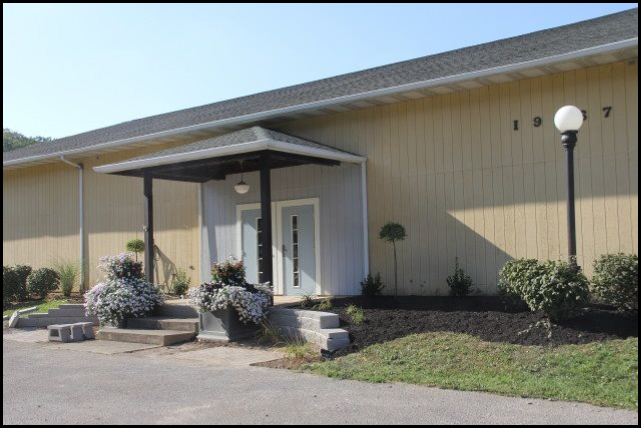
Starting late in the summer of 2018 they plan to film a movie about life during the canal era. It is to be finished in the spring of 2019.
They are seeking an architect to design a new museum. They will then begin fundraising.
They have placed signage along the primary route of the byway. They recently added Loop 1 signage for the canal area from Cambridge City to Richmond and down through Liberty.
The are delivering new byway brochures to locations around Wayne County, including Cambridge City’s antique merchants and library, Hagerstown’s library, and the Old National Road Welcome Center at 5701 National Road E., Richmond.
For more information about the Whitewater Canal Byway Association visit: www.whitewatercanalscenicbyway.org. or visit the Whitewater Canal Scenic Byway/ Presidential Pathways Scenic Byway Visitors Pavilion (Regional Welcome Center), which has models of a aqueduct, lock and mill created by Paul Baudendistel.
Jeffboat To Close
On the CSI October 2004 “Overcoming Obstacles” tour we visited the Howard Shipyards, which was founded on the Ohio River at Jeffersonville, Indiana in 1834 and built riverboats during the height of the steamboat era. In World War II the shipyard won contracts from the U.S. Navy, which led to its workforce expanding from 200 to 13,000. After the war the 80-acre shipyard was taken over by Jeffboat, which built inland barges, towboats and ocean-going vessels. After more than 180 years Jeffboat, the nation’s largest and longest continually operated inland shipyard, is shutting down due to a decline in orders over the last several years.
Today Jeffboat’s workforce has shrunk from 1,300 to 220 employees—back to its size prior to World War II. Owned by American Commercial Lines it is the leading provider of inland barge transportation services in the manufacturing division of American Commercial Barge Line. All construction work will be completed by the end of April 2018.
Currently over 6,600 vessels built by Jeffboat are registered in the U.S. Great Lakes fleets. They also operate daily in the rivers near Chicago.
To learn more about the Howard Shipyards, go to the CSI website indcanal.org and under Tour guides, books and articles your will find the tour guide for “Overcoming Obstacles.” There is an eight page article about the shipyards in it as well as information about the Ohio Falls Canal.
Upcoming CSI Tours
2018 Fall Tour: Friday Oct 5- Sunday Oct 7, 2018
Piqua, OH Miami & Erie Canal
Tour planner & docent Andy Hite – CSO
Note: The date of this tour has been changed from August to October so we can participate at the fall festival on the Johnston Farm at Piqua and ride the canal boat.
2019 Spring Tour
We are currently looking for someone to plan this tour.
If interested contact Bob Schmidt at indcanal.com
2019 Fall Tour: Date to be announced
Joint tour Canal Society of Indiana and Canal Society of Ohio
Western Ohio’s National Road from Springfield, Ohio to Cambridge City, Indiana
Highlighted will be the locations where the National Road intersected with the Miami & Erie and Whitewater Canals
Tour planner & docent Mike Morthorst
We appreciate receiving ideas for tours and the name/s of anyone wanting to lead a tour or help with a tour.
News From Delphi
By Dan McCain
Nearing the completion of the Canal Center’s redecoration things are looking good!
The newest exhibit features a model canal boat built by Terry Bodine of Covington, Indiana and Guy Filchak of Clinton, Indiana. It will help explain how cargo was transported years ago and how tolls were determined.
We were challenged by Carl and Barbara Bauer’s year end donation to illustrate how weight was measured and used to determine tolls to be paid by the Canal Boat Captain at special checkpoints along the 468-mile-long Wabash & Erie Canal. As early as 1843 goods to and from New York harbor could be shipped all the way by water. Machine products, textiles and adornments from eastern ports were shipped in while products like corn, pork, lime and local produce were shipped out. We can now show how tolls were assigned to items of commerce that were moved by the boats.
A large scale was used to weigh barrels of grain or other products like lime, salt pork and flour before they were loaded onto the waiting canal boats for transit. Each commodity was assigned a price per barrel, per pound, etc. by the state.
As the canal aged the tolls were not enough for Indiana to overcome its initial cost, let alone its upkeep. Partially due to the canal debt, the State Legislature reconstituted Indiana in 1851 to never allow heavy borrowing again. Now we can thank these leaders as that’s why Indiana is solvent and prosperous today.
The big job of redecorating the Canal Center’s conference rooms and lobby was undertaken by volunteers. Painting of the ceiling, walls, windows and doors started first. Then came the replacement of old lighting with LED units. Savings to our utility bills will be noticeable as each of the forty 150 watt incandescent dimmable ‘can lighting’ bulbs now only draw 15 watts each—a 90% reduction. Replaced too were the forty ceiling fluorescent fixtures.
A specialized machine operated by a contractor made for easy removal of the old glued down carpet. Piles of ripped up carpet were removed. The Canal Center opened on July 4, 2003. Now 15 years later, the old carpet wasn’t exactly worn out, but it was soiled in spots and called for full replacement to make the facility look bright shiny new again! The full décor was repainted to the colors specified in the architect’s plans. Colors have served well for a multitude of events from beautiful wedding receptions to family reunions, to large and small business meetings and even an annual crowd of 450 German Baptist members attending their private school’s graduation.
The gas furnace above the Canal Museum in the Canal Center died in February 2018. Dick Bradshaw used his cousin’s bucket truck to place the new heat exchanger unit on the roof. Bill Bradshaw not only loaned us his truck, he also annually sponsors the newsletter of the Carroll County Wabash & Erie Canal Association.
McCain Speaks to New York Erie Canal Symposium
ROCHESTER, NY—Carroll County Wabash & Erie Canal President Dan McCain was invited to speak at the recent Erie Canal Symposium in Rochester. More than 125 mostly Erie Canal Corridor committee and members, and State officials were in attendance for this annual meeting. McCain brought ideas and pictures of what has been happening for the last decade at the Canal Park site in Delphi, Indiana, a site that tells the canal’s story in Indiana.
The significance of the waterway’s connection is that the Erie Canal, which had been completed by New York State in 1825, had opened up the opportunity for tens of thousands of people from the east coast to relocate west. Many brought with them their farm equipment or other tools of their crafts so they could make a living in the new land.
“Often the two major canals are considered just one, but they are not the same. The Erie Canal, at 364 miles when completed by New York in 1825, was tremendously successful and made the State millions of dollars” according to McCain. Conversely, the Wabash & Erie Canal construction began in 1832 to connect Toledo at the west end of Lake Erie, across Ohio and Indiana diagonally to the southwest meeting at the Ohio River at Evansville, Indiana. Construction took a long time, and was not completed until 1853. Unfortunately, railroads had already arrived, and competition caused the demise of the whole canal system by 1876 when Indiana sold all of its canal land. “The Wabash & Erie Canal at 468 miles was the longest canal ever built in the United States and ultimately second longest in the World at that time. But instead of making Indiana millions of dollars it nearly caused the bankruptcy of the state,” McCain explained.
McCain reported on the creation of Delphi’s Canal Park, where volunteers restored the neglected Wabash & Erie Canal. They added the long-standing Canal Conference and Interpretive Center that offers its highly acclaimed museum. Volunteer activities have always led the way to creation of the many craft buildings in Canal Park and the redevelopment of the man-made waterway laced with a trail system. “For two decades a corps of talented builders has worked as the Monday-Wednesday-Friday volunteer crew to preserve a village of historic buildings. Our volunteer crew has been made up of a dozen or so individuals, mostly retirees, who have worked year around, completing many challenging projects,” he said.
McCain’s illustrated presentation highlighted these projects showing action and words of the M-W-F volunteers. “They work diligently year-round both inside and out to accomplish the unusual,” according to McCain. “Spring projects can be launched outdoors in the warmer weather although they may have started inside the barn during winter months where planning and assembly of components of the project come together.” He pointed to some projects completed that include a dozen galleries and interactive exhibits inside the Interpretive Museum; restoration and placement of three historic iron bridges over the canal; the restoration of two log structures; a historic church, a full-scale lime kiln, a railroad depot and the creation of five Village crafter’s shops. “ Ultimately the time needed for upkeep of all these facilities as they age and need repairs takes the remainder of their time,” he concluded. At the end of McCain’s presentation time was allowed for questions from the audience.
After several comments from the floor it became apparent that the decades of efforts by the Delphi volunteers representing the Wabash & Erie Canal Association were considered exceptional and fruitful.
CSI Elects New Director
 John Hillman, age 77, has been President of Whitewater Valley Railroad in Connersville, Indiana, since the year 2000. He has also been a member of the Whitewater Valley Railroad since 1973.
John Hillman, age 77, has been President of Whitewater Valley Railroad in Connersville, Indiana, since the year 2000. He has also been a member of the Whitewater Valley Railroad since 1973.
John retired from the Kroger Company after 41 years. He became interested in canals because of the Whitewater Valley Railroad, which is known as “The Canal Route.” He has been a member of the Canal Society of Indiana since 1990. He has helped CSI with its 30th Anniversary Spring Tour in April 2012 when we rode the Whitewater Valley Railroad and with erecting signs at canal sites along the railroad’s route from Connersville to Metamora.
John has been married for 52 years to Judy Hillman. He is the father of four and grandfather of eight.
John has been elected for a 3 year term 2018-2021.
Other Directors Re-elected For 3 Year Terms
Terry Bodine Covington, Indiana
Phyllis Mattheis Cambridge City, Indiana
Cynthia Powers Roanoke, Indiana CSI Treasurer
Sue Simerman Ossian, Indiana CSI Secretary
Brian Stirm Delphi, Indiana
Jerry Lehman of Terre Haute, Indiana has asked to resign from the board. We thank him for his past service to CSI.
Scenes Along Ohio’s Canals
The following old postcards were found on E-bay by Neil Sowards, CSI member from Fort Wayne, Indiana.
The following photo shows a dredge working on the Ohio & Erie Canal around 1910. Note all the trees and brush that had grown up along the canal and had to be removed as well as the canal having to be dredged. This was near the end of Ohio’s canal era. The 1913 flood did so much damage that Ohio’s canals were never repaired.
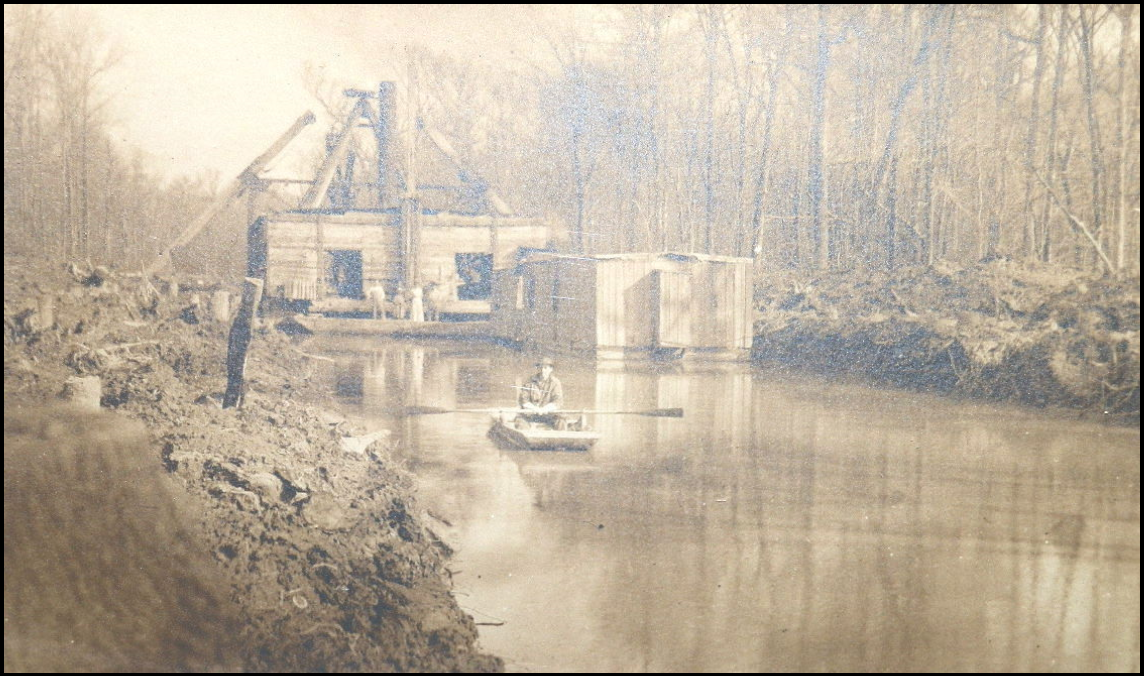
Below is a postcard of a turn bridge on the Miami & Erie Canal at Mandale in Paulding County, Ohio. When a canal boat approached the bridge it swiveled on the mechanism located under it on the right side and became parallel to the right side of the canal until the boat passed through. It then turned back to this position for cross traffic.
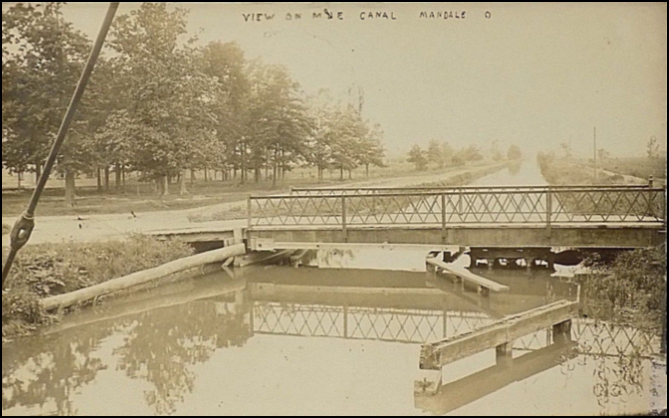
Illinois & Michigan Canal Lock Excavation
By Gerald Hulslander
The Illinois & Michigan Canal locks on the side cut canal that went from the main line south about 3-4 blocks, then east 3 blocks to discharge into the Fox river are being excavated. The lateral dropped one lock, which made water power possible twice – from the main line and then to the Fox. In that area the big use of the canal was for manufacturing and shipping although there was a lot on the main line and the feeder also. The lateral was filled in after 1933 when the Illinois Waterway lock and dam system was completed. I have been taking pictures and will get some to you when the lock is completely empty.

